In the high-end sim-racing segment, there are a number of brands that have been evolving for some time now. The most popular ones that come to mind are Simagic, Simucube and Fanatec. This segment is quite competitive in the sense that each manufacturer tries to push back the limits of the technologies present on the market by proposing innovative and, above all, expensive products.
However, there are also a number of young brands who want a share of the high-end sim-racing market, such as Moza Racing andAsetek SimSports. As far as Moza is concerned, we can say that it literally comes from nowhere, but has nevertheless managed to impress us with its premium products, in particular its base R21 which develops 21 nm of torque. But for Asetek, it’s a different story. Fans of custom PCs will certainly think that this name sounds familiar, and it is. Asetek is undoubtedly the world leader in watercooling, and has been for some time. The Danish company has a long list of patents on pumps, CPU and GPU block designs, heat sinks, tubes and everything else related to watercooling. It’s simple: all AIO brands (CoolerMaster, Be Quiet, Corsair, NZXT, etc.) use Asetek patents and blueprints for their products.
With a view to diversifying its customer portfolio, and also because the company’s boss is a fan of motor racing, the Danish company has recently entered the race for sim-racing peripherals. Since it lacked experience, Asetek entered into a partnership with Granite Device, the company that owns the Simucube brand, and this partnership involves the sharing of knowledge and access to several Simubube technologies, including QR and so on.
Today, Asetek SimSports offers 3 product ranges: The Prima for entry-level products, Forte for the mid-range and Invicta for the high-end. Each range has its own peripherals, except for the Invicta, which uses the Forte’s steering wheel for lack of a top-of-the-range one. But the Danish brand does intend to remedy this rather quickly. In what follows, I’ll introduce you to the wheels currently available from Asetek, give you my opinion on them and point you in the direction of which wheel to choose for your setup, depending on your driving style.
Asetek SimSports shuttlecocks
Currently, the Danish manufacturer of sim-racing peripherals only offers 2 complete steering wheels in its range: Prima and Forte. However, there are empty wheels that can accommodate a Button Box, or button module if you prefer. This enables the manufacturer to offer a fairly wide range of wheels, without creating a Fanatec-style catalog with over 20 different wheels.
The main purpose, in my opinion, of offering empty wheels and button modules is to reduce R&D costs, while offering a rather decent range.
La Prima steering wheel
Design
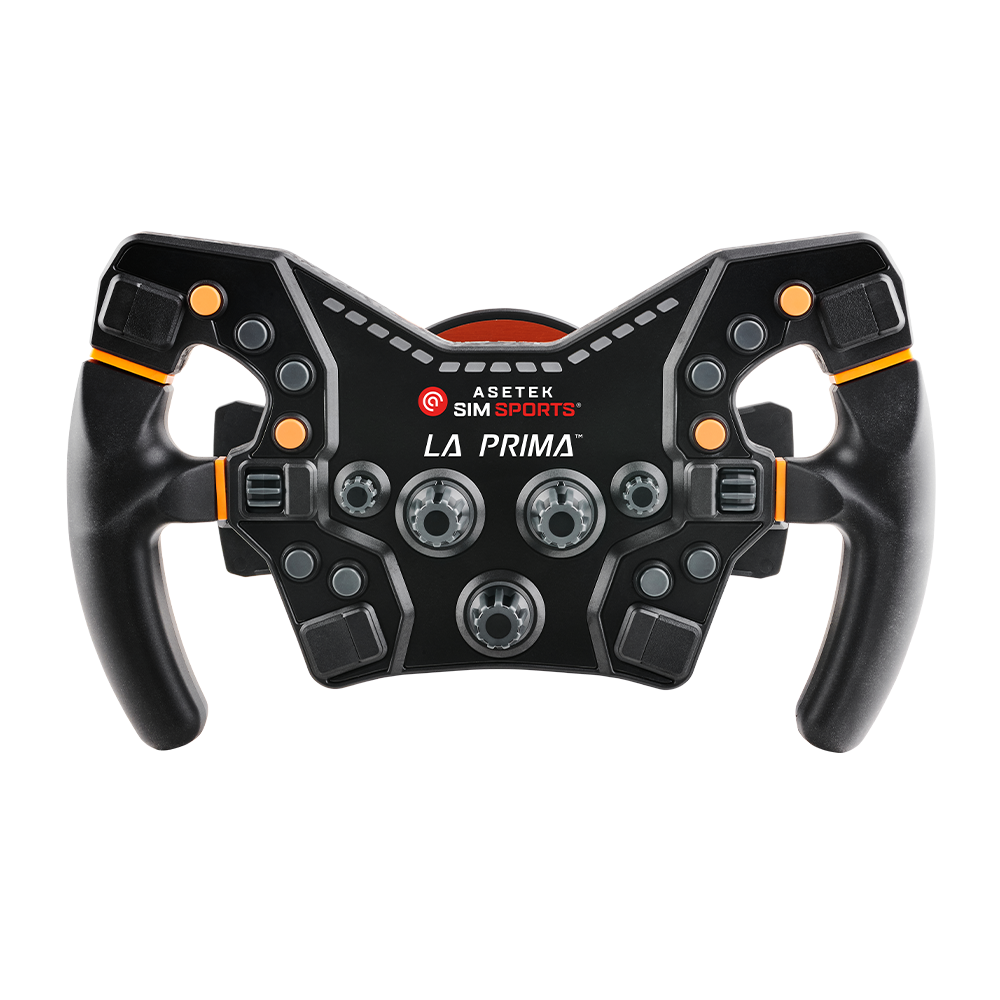 | 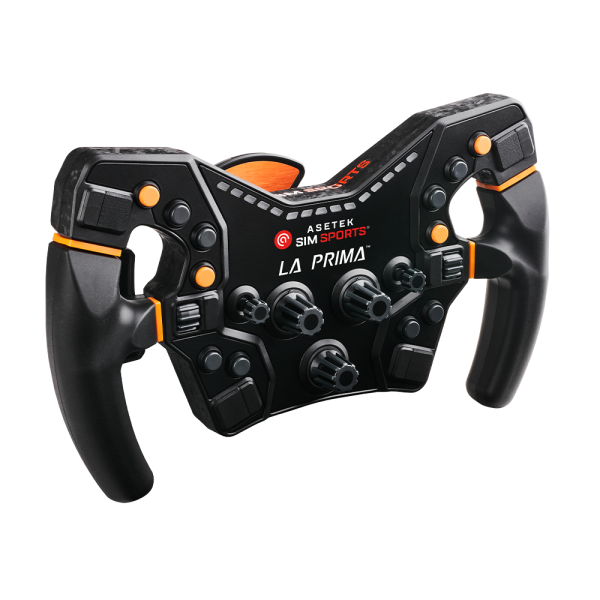 |
So, the design of the La Prima steering wheel is pretty standard for the GT/Formula category. The rectangular shape is open at the bottom, with handles that don’t join at the front. This makes for better ergonomics, especially as these are rather large.
At the front is a handsome brushed aluminum faceplate, dotted with buttons and controls. The color is Gun Metal, with a few orange accents on controls. Overall, I think this steering wheel is beautiful.
Customized assembly
Asetek’s flywheels use a version of Simucube’s Quick Release. As a result, the steering wheel slots onto its base, and this QR provides a very solid connection, devoid of any bending or other movement.
Manufacturing and finishing
Asetek’s first steering wheel features a composite structure with an aluminum faceplate. Composite is a fancy, complicated word which indicates that the structure of the steering wheel uses plastic reinforced with carbon fibre. I’m not a fan of plastic on a €400-plus steering wheel, but hey, it’s the manufacturer’s choice.
In terms of finish, there’s not much to say, except that it’s almost perfect. The structure is perfect, with no machining defects or burrs. However, this can’t be said about all buttons, at least not all of them. Some of those available on this steering wheel, which are 12 by the way with switches and encoders, are a bit tricky to use. I don’t know whether it’s a problem with the tolerance of the buttons or a mechanism that’s a little too hard, but in any case, it’s a little snaggy. It’s not bad, but it will take some getting used to.
Handling the steering wheel
The grip on the La Prima steering wheel is superb, largely due to the floating handles. The wheel is open at the bottom, with rather large handles that also improve grip and ergonomics.
The controls are conveniently positioned across the steering wheel, making them easy to reach in the middle of a race. And the same goes for the 2 rear paddles: they fit perfectly under your hands, and are the right size.
The Forte steering wheel
Design
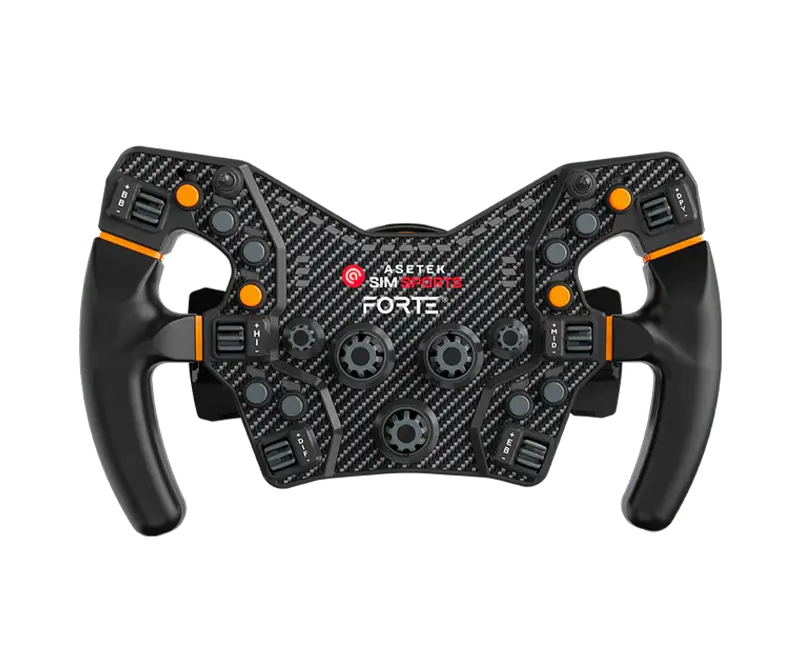 | 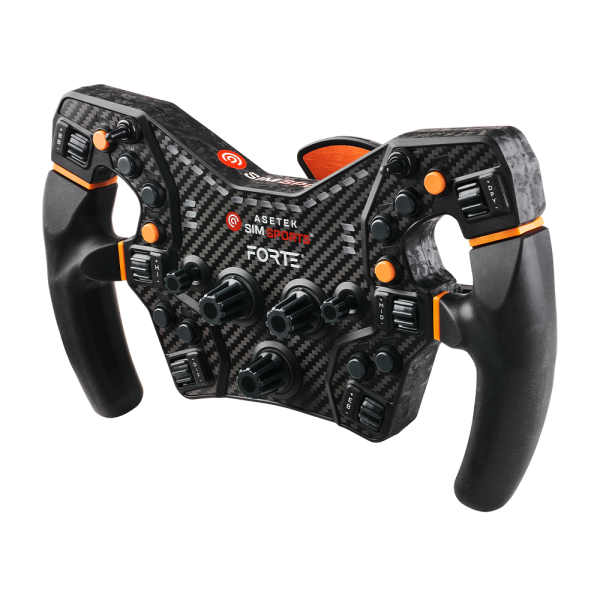 |
The Asetek Forte steering wheel has the same design as the La Prima, with only notable differences in the faceplate and controls. This time, the faceplate is made of carbon fiber, with orange accents on the front. The orange color is rather light, unlike some of Asetek’s pedalboard parts.
Otherwise, the dimensions are the same, with a diameter of 29 cm, the shape is the same, there are a few more switches and all the buttons/controls are backlit this time. Overall, the Forte steering wheel slightly enhances La Prima’s premium design, while remaining virtually identical.
Customized assembly
At the rear, we find the same QR used on Asetek’s bases, namely the one that looks a lot like Simucube. The assembly operation is the same, to be frank: you align the QR and have it slot into place.
Manufacturing and finishing
The Forte uses the same plastic structure – sorry, I mean composite – with a layer of carbon fiber on the faceplate. It’s very well made, finished to the last detail, with no flaws, offsets or anything else. It has to be said that Asetek is tackling the premium sim-racing segment, so its products had to reflect this to be credible.
The only small problem I can find with this steering wheel is its controls. Some buttons, especially the switches, sometimes catch in use. Incidentally, it’s the same story as with the La Prima steering wheel, and that tells me it’s a parts tolerance issue. I could be wrong about this, but a steering wheel costing almost €700 has to be perfect, don’t you think?
Handling the steering wheel
Handling of the Forté is identical to that of the La Prima, namely excellent. The handles are open at the bottom and provide a very good grip on the steering wheel, especially as they are larger than the competition from Fanatec or Moza. You feel you’re holding a good steering wheel in your hands, one that won’t slip or cause discomfort over time.
As for the buttons/controls, they’re superbly well thought out and positioned too. Everything fits perfectly in your hand, or rather in your fingers. What’s more, the Forte’s controls feature backlit labels, making the steering wheel a pleasure to use. However, there are only 2 paddles at the rear, and this will penalize fans of endurance racing, GT, or even F1.
Naked ruffles
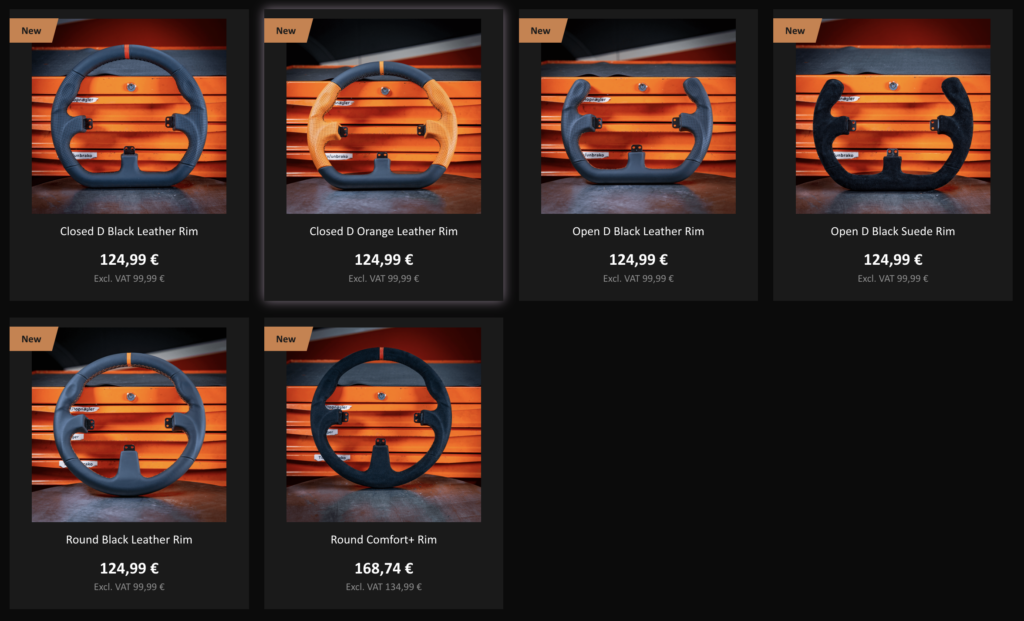
Given that Asetek’s range of steering wheels is very limited, with 2 models that are virtually identical, the Danish manufacturer offers naked wheels, i.e. only the outer structure of the steering wheel, without the faceplate. However, Asetek also sells the faceplate, or button module if you prefer, of its La Prima and Forte range.
For bare wheels, there are 6 in all:
- 2 completely round with a diameter of 33 cm and two different materials: leather and one that looks a lot like alcantara, which Asetek calls Comfort+. These two steering wheels are superbly finished, and can accommodate Button Boxes La Prima or Forte, which are the button modules. Prices start at €125 for the leather version and €169 for the Comfort+ version.
- 4 flat-bottomed flywheels with a diameter of 33 cm, 2 of which are open at the top, Tesla Yoke style. For materials, we have leather and alcantara, with color combinations for the first finish. It’s beautiful, premium and also very ergonomic with a diameter of 33 cm. These 4 wheels are priced at €125, whether you choose an open or closed wheel.
Complementing this range of naked steering wheels, Asetek offers the Button Box La Prima and Forte for €294 and €400 respectively. These modules are identical to those used in the brand’s GT steering wheels, and are also required to complete the wheel.
Which one to choose?
Choosing a steering wheel isn’t often a matter of picking the most visually appealing one. There are other parameters that enter into the equation, including :
- Preference for motor racing. Some racers swear by GT and F1, and will therefore logically turn to standard La Prima and Forte GT steering wheels. But there are also other sim-racing drivers who are much more versatile with several motorsport disciplines, and will therefore prefer a round or flat-bottomed steering wheel as offered by Asetek, with the accompanying button module of course.
- The budget allocated to the steering wheel. I don’t want you to think that all sim-raceurs don’t have the same budgets for their setup, and that’s why the price of a steering wheel can affect their choice. Well, to be frank, if you’re considering Asetek’s products, it’s because you can afford to buy a steering wheel at nearly €700. What’s more, the Danish manufacturer offers pretty good customization with its bare wheels, and a complete steering wheel will set you back between €420 and €570. Still cheaper than standard GT/F1 wheels, by the way.
- Base used. Depending on the Asetek base you have, especially if you’ve opted for La Prima, the choice of steering wheel can have an impact on the force feedback you feel. Standard GT/F1 steering wheels weigh in at 1.4 kilos on average, and you’ll potentially feel some clipping with the La Prima base. If you opt for an all-round or flat-bottomed custom steering wheel and a button module, you’ll increase the chances of saturating the engine, as these wheels are inevitably heavier. This question doesn’t arise with Invicta or Forte bases, as these are more powerful and can cope with the clipping of a backhand without flinching.

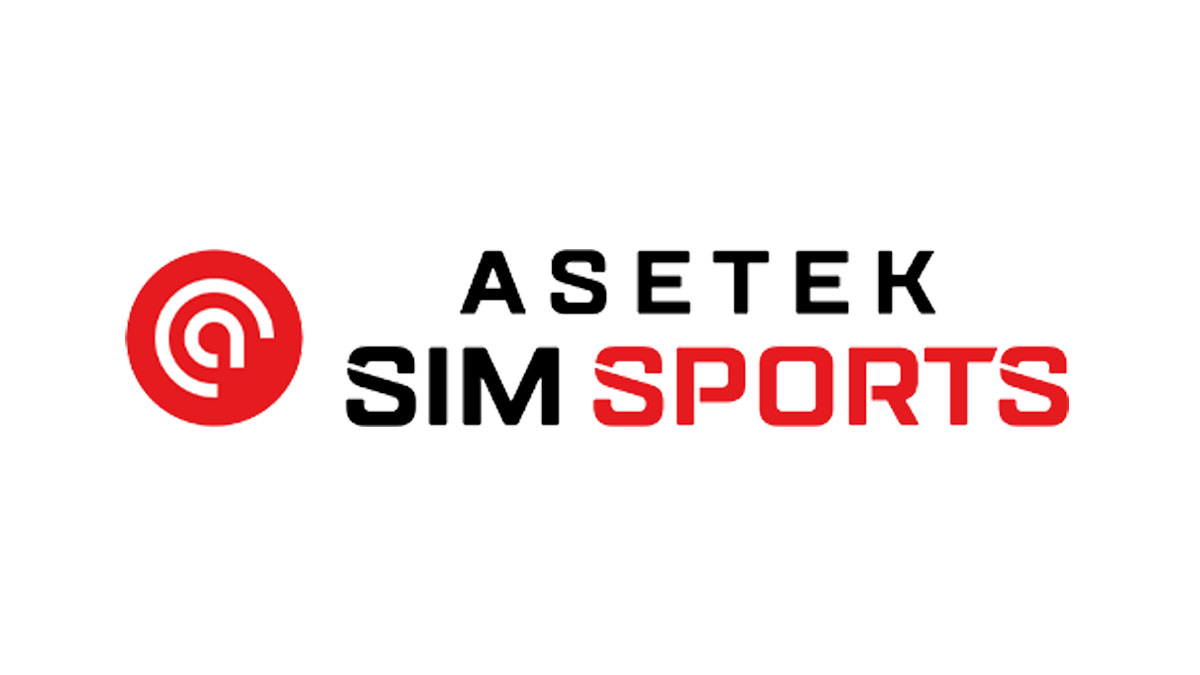
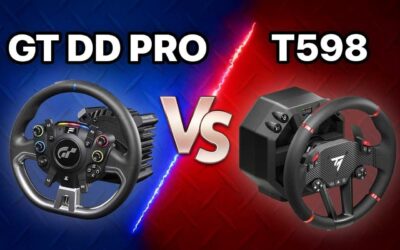
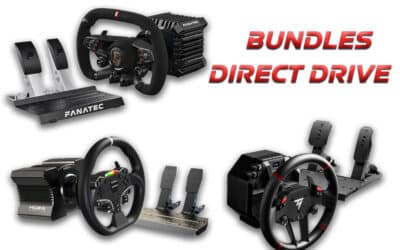
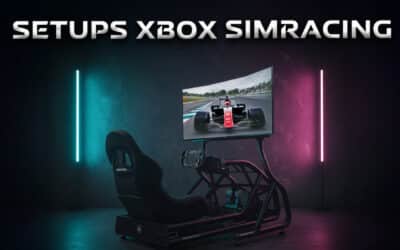
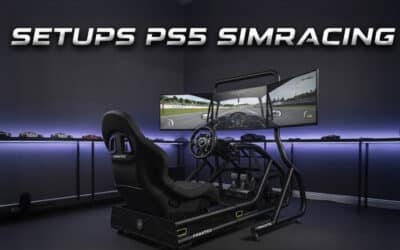
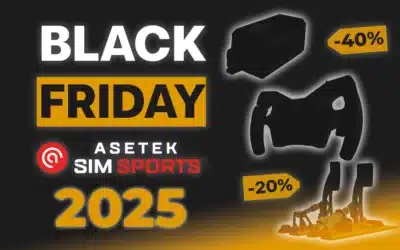

0 Comments